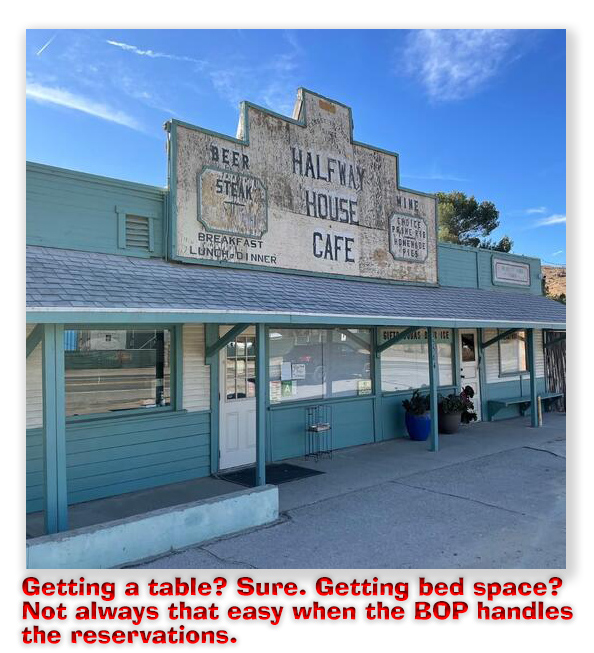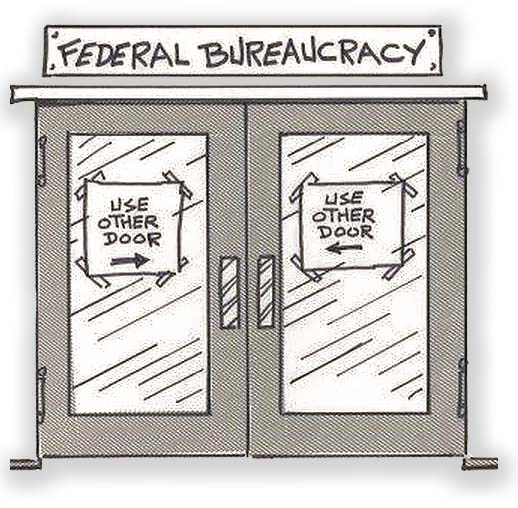We post news and comment on federal criminal justice issues, focused primarily on trial and post-conviction matters, legislative initiatives, and sentencing issues.

DC COURT DISMISSES CHALLENGE TO BOP FSA CREDIT HALFWAY HOUSE PLACEMENT
 You may recall that last December, the Criminal Law Reform Project, ACLU and mega law firm Jenner & Block sued the Bureau of Prisons for denying prisoners placement in halfway house or home confinement for the full term earned by their FSA time credits (FTCs).
You may recall that last December, the Criminal Law Reform Project, ACLU and mega law firm Jenner & Block sued the Bureau of Prisons for denying prisoners placement in halfway house or home confinement for the full term earned by their FSA time credits (FTCs).
Last week, the case died an ignominious death.
The case sought to certify a class action – the class being defined as anyone who now or in the future would be eligible to use FTCs for prerelease custody – to win a judicial holding that BOP rules sending a prisoner to halfway house only when the halfway house said it had space available violated 18 USC §§ 3624(g)(1) and (2). That statute says that when a prisoner has earned FTCs “in an amount that is equal to the remainder of the prisoner’s imposed term of imprisonment… [he or she] shall be placed in prerelease custody.” (Emphasis is mine).
BOP rules and policies, however, let the agency delay placement until space is available at a preferred halfway house, no matter how long that might be.
The suit argued that the BOP’s rules and policies violated 5 USC § 706(1) (contending that the BOP’s application of FTCs is “unlawfully held or unreasonably delayed”) and § 706(2) (the BOP’s rule on application of FTCs is “arbitrary, capricious, an abuse of discretion, or otherwise not in accordance with law”). In its ruling, the U.S. District Court for the District of Columbia held that the plaintiffs could not justify establishing a class for litigating the 706(1) claim, because whether placing an FTC inmate in halfway house was “unreasonably delayed” past the eligibility date depended on the length of the delay and reasons for it, both questions that were individual to the inmate in question.
The District Judge held that a class action had been justified on the § 706(2) “arbitrary, capricious, an abuse of discretion” question, but the Court nonetheless granted the BOP’s motion to dismiss the count. The prisoners’ suit argued that § 3624(g)’s language that eligible prisoners “shall be placed in prerelease custody” means that the BOP must place them in halfway house as soon as they are eligible. But the Court disagreed. It held that the prisoners’
“shall-means-shall” argument overlooks that § 3632(d)(4)(C) does not specify when a prisoner must be transferred to prerelease custody. Instead, it provides that the BOP “shall transfer eligible prisoners, as determined under section 3624(g), into prerelease custody or supervised release.” 18 U.S.C. § 3632(d)(4)(C). Section 3624(g), in turn, establishes the criteria for eligibility. Neither § 3632(d)(4)(C) nor § 3624(g) says that the BOP must transfer a prisoner immediately upon achieving eligibility. Section 3632(d)(4)(C) is best read as a directive that identifies what group of prisoners the BOP must transfer into prerelease custody, not as establishing an immutable date by which the BOP must effectuate individual transfers.
 The Court acknowledged that “some district courts have held in the habeas context that the FSA requires the BOP to transfer an individual prisoner to prerelease custody once they become eligible… None of these cases, however, presented the argument made here by Plaintiffs, which is that the FSA compels the BOP to transfer every prisoner on the date of eligibility.”
The Court acknowledged that “some district courts have held in the habeas context that the FSA requires the BOP to transfer an individual prisoner to prerelease custody once they become eligible… None of these cases, however, presented the argument made here by Plaintiffs, which is that the FSA compels the BOP to transfer every prisoner on the date of eligibility.”
The 48-page decision is detailed and fairly well reasoned. While not slamming the door on lawsuits to force BOP compliance with timely placement of FTC prisoners, Judge Amit Mehta’s ruling highlights the procedural and substantive obstacles to doing so. As such, it should be required reading for those seeking to force the Bureau to send them to prerelease custody on their FTC eligibility date.
Crowe v. Federal Bureau of Prisons, Case. No 24-cv-3582, 2025 U.S. Dist. LEXIS 109052 (D.D.C., June 9, 2025)
– Thomas L. Root























